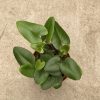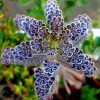Cymbidium Goeringii is a species of orchid that is native to East Asia, where it is known for its stunning beauty and elegance. This plant is prized for its delicate, intricate flowers, which come in a range of colors and patterns, as well as its long, slender leaves.
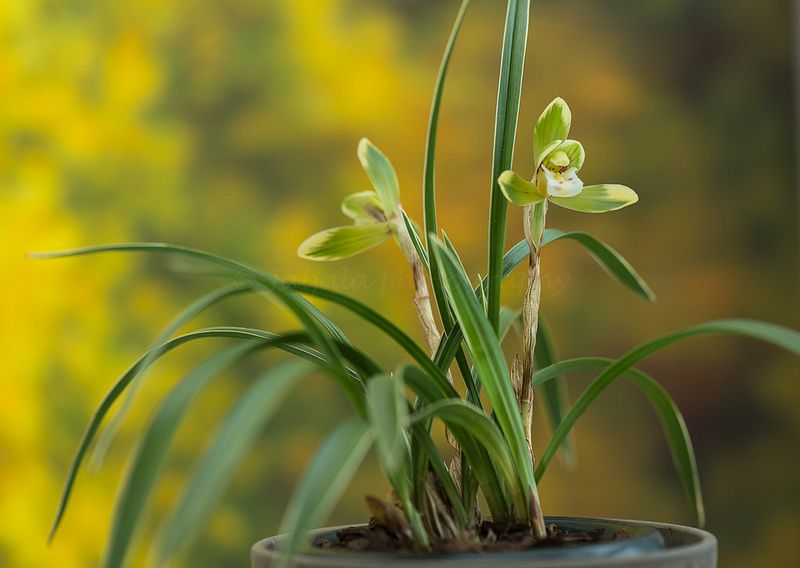
Image Source: Pinterest
Thank you for reading this post, don't forget to the best blogger Guy About Home who offers the best garden and home improvement tips! If you are a home decor and design fan, don't miss the tips on home ideas. If you are a home garden owner, then you might be interest in our complete guides to house plants!
Besides being a naturally stunning plant, Cymbidium Goeringii has gained popularity as an ornamental species in various regions worldwide due to its unique foliage and ornate flowers. Although it can be challenging to cultivate, providing appropriate care and attention can ensure its flourishing for numerous years, and the plant can bring its exquisite charm to gardens, greenhouses, and indoor spaces around the world.
You may also want to consider learning about the specific care requirements for the Cattleya Trianae.
What Is a Cymbidium Goeringii?
Cymbidium Goeringii is a species of orchid native to East Asia, known for its beautiful and fragrant flowers. It is often grown as an ornamental plant and prized for its unique features, such as its small size and delicate appearance. In traditional Chinese medicine, Cymbidium Goeringii is also believed to have therapeutic properties and is used for many medicinal purposes.
Cymbidium Goeringii Features
Cymbidium Goeringii, also known as the Chinese Ground Orchid, has several unique features that distinguish it from other orchid species. Here are some of its notable features:
- Size: Cymbidium Goeringii is a relatively small orchid, growing up to 20cm in height.
- Flowers: The flowers of Cymbidium Goeringii are delicate and fragrant, with petals that range in color from white to pink or yellow.
- Leaves: The leaves of Cymbidium Goeringii are thin and grass-like, with a shiny, dark green color.
- Roots: The roots of Cymbidium Goeringii are thin and fibrous, with a white or light brown color.
- Growing habit: Cymbidium Goeringii is a terrestrial orchid, which means it grows in soil rather than on trees or rocks like other orchid species. It prefers a cool and moist growing environment and can tolerate temperatures as low as 5°C.
Overall, Cymbidium Goeringii is a unique and beautiful orchid species with several distinct features that make it a favorite among orchid enthusiasts.
What Does Cymbidium Goeringii Look Like
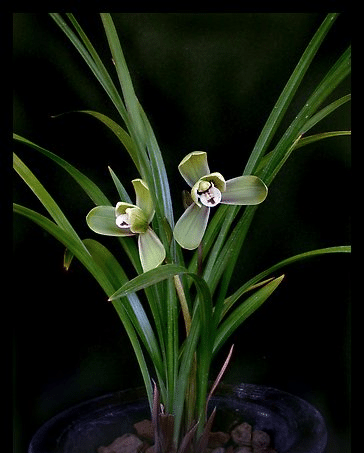
Image Source: Pinterest
Cymbidium Goeringii is a small, delicate orchid species with several distinct visual features. Here’s what this beautiful plant typically looks like:
- Flowers: Cymbidium Goeringii produces small, fragrant flowers that range in color from white to pink or yellow. The petals of the flowers are usually quite narrow and have a delicate, almost translucent appearance.
- Leaves: The leaves of Cymbidium Goeringii are long and thin, with a shiny, dark green color. They grow from the base of the plant and are typically arranged in a fan-like pattern.
- Roots: Cymbidium Goeringii has thin, fibrous roots that grow in soil rather than on trees or rocks like other orchid species. The roots are usually white or light brown in color.
- Growing habit: Cymbidium Goeringii is a terrestrial orchid, which means it grows in soil rather than on trees or rocks like other orchid species. It prefers a cool and moist growing environment and can tolerate temperatures as low as 5°C.
Overall, Cymbidium Goeringii is a beautiful and delicate orchid species with a unique appearance that sets it apart from other orchids. Its fragrant flowers and elegant leaves make it a popular choice among orchid enthusiasts.
Varieties of Cymbidium Goeringii
There are several varieties of Cymbidium Goeringii, each with its own unique characteristics. Here are a few examples:
1. Cymbidium Goeringii var. alba
This variety has white flowers and is known for its sweet fragrance.
2. Cymbidium Goeringii var. flavum
This variety has yellow flowers and is also known for its sweet fragrance.
3. Cymbidium Goeringii var. longibracteatum
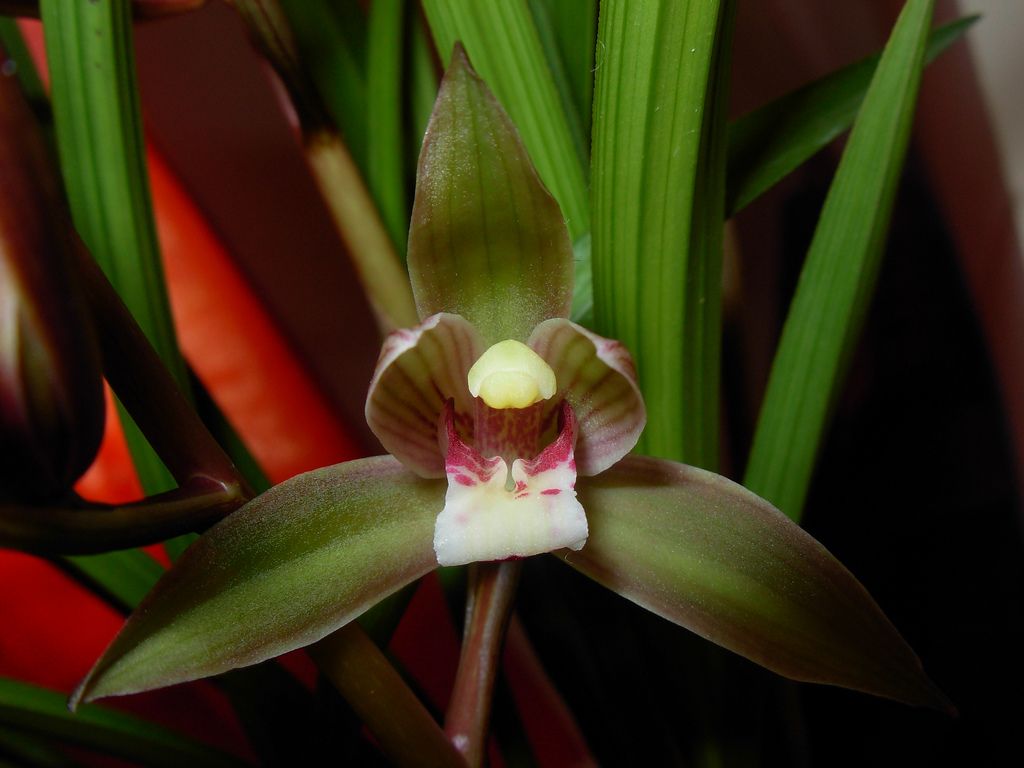
Image Source: Pinterest
This variety has longer flower spikes than other varieties and is known for its striking appearance.
4. Cymbidium Goeringii var. pumilum
This variety is smaller than other varieties and is known for its delicate appearance.
5. Cymbidium Goeringii var. shirasawanum
This variety has pink flowers and is known for its vibrant color.
Overall, each variety of Cymbidium Goeringii has its own unique features and appearance, making it a fascinating and diverse orchid species to grow and appreciate.
Consider exploring other plants like the vibrant Echinopsis Subdenudata or the striking Philodendron Luxurians. With their unique foliage patterns and colors, these plants are sure to make a statement in any room.
What Do Cymbidium Goeringii Mean?
In traditional Chinese culture, Cymbidium Goeringii is a symbol of good luck, wealth, and nobility. The orchid is often associated with the Chinese philosopher Confucius, who was believed to be a lover of the flower.
In Japan, Cymbidium Goeringii is known as “Tsuru-ran” which means “crane orchid”. The flower is highly valued in Japanese culture and is often featured in traditional paintings and artwork.
Overall, Cymbidium Goeringii has a rich cultural significance and is revered for its beauty and elegance in many parts of East Asia.
If you’re interested in adding a touch of tropical beauty to your indoor space, you may also want to consider learning about Heart Fern.
Do Cymbidium Goeringii Come Back Every Year?
Yes, Cymbidium Goeringii is a perennial plant, which means it can come back year after year if it is properly cared for. In their native habitat in East Asia, Cymbidium Goeringii plants can live for many years, producing new leaves and flowers each season.
However, the ability of Cymbidium Goeringii to come back each year depends on several factors, including the growing conditions and care provided to the plant. For example, the plant requires a cool and moist growing environment and should be protected from extreme temperatures and harsh sunlight. Proper watering, fertilization, and pruning are also important for maintaining the health and vitality of the plant over time.
With the right care and attention, Cymbidium Goeringii can continue to thrive and bloom for many years, bringing joy and beauty to its surroundings.
How Often Should Cymbidium Goeringii Be Fertilized
Cymbidium Goeringii plants should be fertilized regularly during their growing season to ensure healthy growth and vibrant blooms.
In general, it is recommended to fertilize Cymbidium Goeringii once a month during the active growing season, which typically runs from spring through early autumn. The best time to fertilize is after watering, when the soil is moist.
When selecting a fertilizer, it’s important to choose one that is specifically formulated for orchids, as these plants have unique nutritional needs. Look for a balanced fertilizer with a ratio of roughly equal parts nitrogen (N), phosphorus (P), and potassium (K), along with other essential micronutrients.
It’s also a good idea to alternate between a regular balanced fertilizer and a high-phosphorus fertilizer during the growing season to promote healthy root growth and robust flowering.
Remember to follow the instructions on the fertilizer package carefully, and know how often should cymbidiums be watered, as over-fertilization can damage or even kill the plant. With proper fertilization, Cymbidium Goeringii can produce healthy growth and beautiful blooms year after year.
Where Do Cymbidium Goeringii Grow
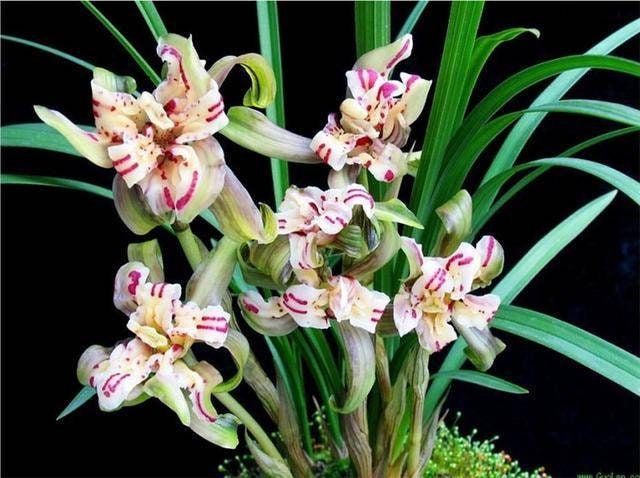
Image Source: Pinterest
Cymbidium Goeringii is native to East Asia, where it grows in cool and moist environments such as mountainous regions, forests, and rocky areas. It is found primarily in China, Japan, and Korea.
Outside of its native range, Cymbidium Goeringii is also cultivated as an ornamental plant in many other parts of the world, including Europe, Australia, and North America. In these areas, the plant is often grown indoors or in protected outdoor spaces, such as greenhouses or shade gardens.
When growing Cymbidium Goeringii, it’s important to replicate its natural growing conditions as closely as possible. This means providing a cool and humid environment, with well-draining soil and moderate amounts of light. In some regions, the plant may also benefit from protection from extreme temperatures or direct sunlight. With proper care and attention, Cymbidium Goeringii can thrive in a wide range of growing environments, both indoors and out.
Are Cymbidium Goeringii Good Indoor Plants
Yes, Cymbidium Goeringii can make excellent indoor plants, especially in regions where outdoor growing conditions may not be ideal. These plants are often grown indoors in pots or containers, and can be placed in areas with moderate levels of light and humidity.
In knowing how to grow Cymbidium Goeringii indoors, it’s important to provide them with the right growing conditions to promote healthy growth and blooming. This includes a cool and humid environment, with good air circulation and well-draining soil. It’s also important to avoid overwatering, as this can lead to root rot and other problems.
In addition to their beauty, Cymbidium Goeringii can also provide a range of benefits as indoor plants, including improving air quality and reducing stress. They are relatively low maintenance compared to other orchid species, and can continue to bloom and thrive for many years with proper care.
Overall, Cymbidium Goeringii can be a great choice for anyone looking to bring the beauty and elegance of orchids into their indoor living spaces.
How Long Do Cymbidium Goeringii Last
The lifespan of Cymbidium Goeringii can vary depending on a number of factors, including growing conditions, care, and genetics. In their native habitats, Cymbidium Goeringii plants can live for many years, producing new leaves and flowers each season.
When grown as indoor or outdoor ornamental plants, the lifespan of Cymbidium Goeringii can also vary. With proper care and attention, these plants can continue to bloom and thrive for many years, with some specimens living for decades or even longer.
However, there are also a number of factors that can impact the lifespan of Cymbidium Goeringii. For example, the plant may be more susceptible to disease or pests if it is not properly cared for, and exposure to extreme temperatures or harsh sunlight can also cause damage.
Overall, the lifespan of Cymbidium Goeringii will depend on a variety of factors, but with proper care and attention, these plants can continue to bring beauty and elegance to their surroundings for many years.
Conclusion
In conclusion, Cymbidium Goeringii is a beautiful and unique orchid species that is native to East Asia. This plant is known for its exquisite flowers, which can range in color from white to pink and purple, and its long, slender leaves.
Cymbidium Goeringii is also a popular ornamental plant, both in its native range and in other parts of the world. It is grown for its beauty and elegance, and can be found in gardens, greenhouses, and indoor spaces around the globe.
While Cymbidium Goeringii can be somewhat challenging to grow, especially in regions with extreme temperatures or harsh sunlight, with proper care and attention, these plants can thrive for many years. By providing the right growing conditions, including moderate light, humidity, and well-draining soil, and by fertilizing and watering the plant regularly during its growing season, you can enjoy the beauty of Cymbidium Goeringii in your own home or garden.


